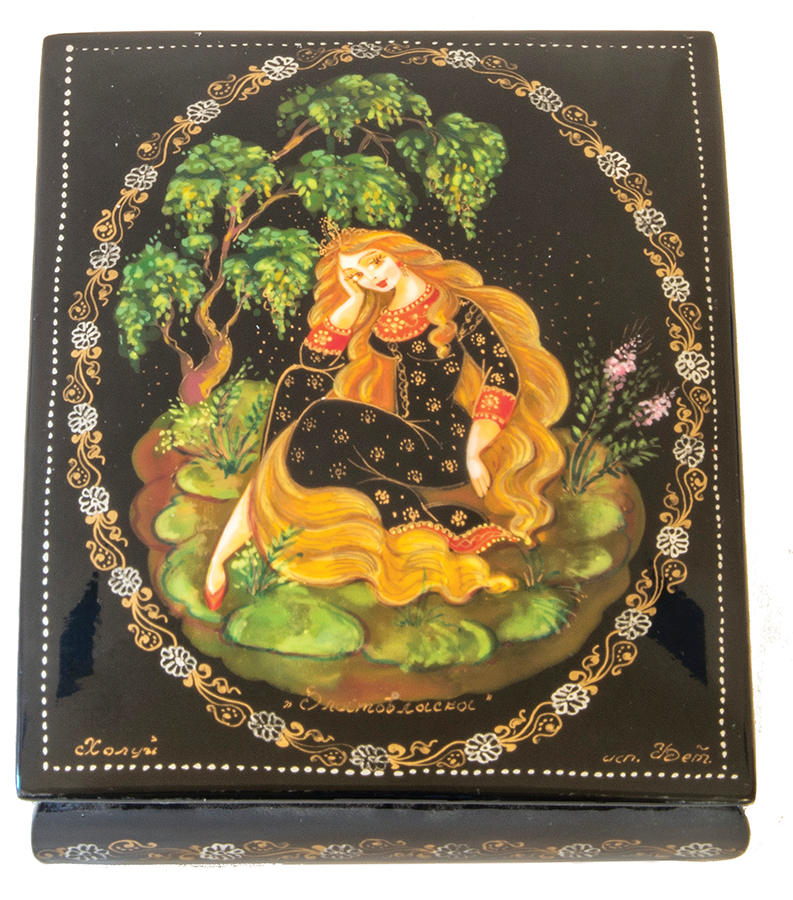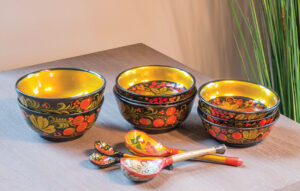
Behind these intricately painted miniature masterpieces, there is a compelling story to be told. It concerns a centuries-old niche art form that has survived through dynasties of painters and tumultuous times.
At least two significant events gave birth to Russian lacquer miniatures. The first had to do with Peter the Great. While building the Monplaisir Palace in the early 1700s, the famous czar commissioned a room decorated with ninety-four lacquer panels. To accomplish the task, painters spent months studying the art of Chinese lacquerware.
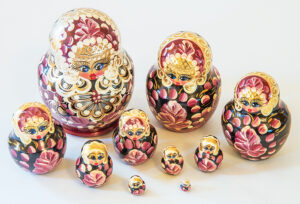
Around the same time, tobacco became affordable and extremely popular. People needed a place to stuff their snuff, but most of them couldn’t afford containers made of ivory or precious metals. Local workshops capitalized on this opportunity and began fabricating boxes from papier-mâché, which consisted of cardboard layers pasted together, boiled in linseed oil, and oven-dried. Lightweight and tough as wood, papier-mâché became the go-to material for crafting other wares, including bowls, matchboxes, nested dolls, and trays. It also provided a suitable canvas for the artists who hand-painted their surfaces.
There are four styles of Russian lacquer painting. The oldest and most well-known originates in Fedoskino, a village north of Moscow. Influenced by their Chinese predecessors, Fedoskino artists use oil paint to create realistic scenes on black backgrounds.
Artists from Kholui, Mstera, and Palekh use egg tempura paint. Even though their approaches differ in some ways, they all typify a style commonly found in Eastern Orthodox churches.
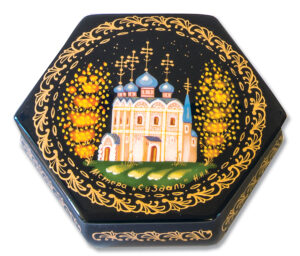
Known as icons, these images of saints possess a one-dimensional, illustration-like quality. Christian colonists brought icons to Russia in the twelfth century, and artists have been copying the technique ever since.
After the Russian Revolution of 1917, the new Communist regime seized churches and persecuted Christians to the extent that icon painters found themselves out of a job. But they soon discovered a new way to ply their trade: painting miniatures.
Most Russian lacquer paintings have a few things in common. They feature depictions of horse-driven sleighs called troikas; scenes from fairy tales, folklore, or the outdoors; and gold leaf or mother-of-pearl.
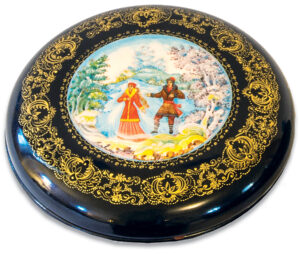
It takes close scrutiny to fully appreciate the richness of the work, which reveals an extraordinary level of depth and dimension.
These artists are trained masters who prepare their own paint and apply it in numerous thin layers—a process that has remained unchanged for hundreds of years.
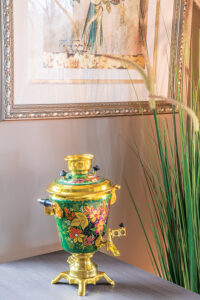
Beyond the exquisite detail, Russian lacquer miniatures embody a potent heritage that make them some of the most coveted collectibles in the world. Authentic pieces may be hard to come by Fedoskino miniatures, for example, are quickly swept up by dealers and collectors—sometimes even before the lacquer has a chance to dry.—Matt Nelson, guest contributor; photography by Pat Wherritt
